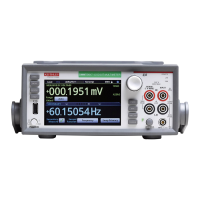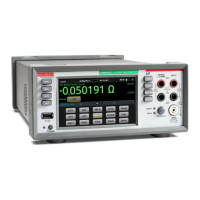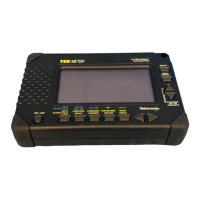Theory of
Operation —
DM
501A
C
!
1
1
(?0
Vac),
and
C 1 1
1 2
comprise the
20
Vac
compensation.
Capacitors Cl
120,
Cl
128 (200
Vac),
and
Cl 122
comprise Mie
200 Vac compensation. TtieOOO
Vac
compensation
corcsists of
Cl
126,
Cl
129
(500 Vac), and
C
i
r.'-l
rii'C r.ttom
i.Tori signal
passes tlirough
switches S
1-
c-i:l
1
D (;jin
and posistc;
RT
1683 to the input
of the
Coffer
(illSOO) S'multanoously,
'he oUier
half
of
swc,,p ‘l
1
-
;j
(pin
5)
couples t tie output of
the dO Converter
('
'-ipg;
I
iirong!’, switcfi
sections
S3
and
St to the Analog
Cyinvei
ter,
li'ii
15
liiu posibtor (RF
1633)
witti diodes CR1631 and
CRU.i3? protect
111539 from input voltage overloads.
When an
overload occurs,
diodes CR1631 a.nd CR1632
clami)
itie signal at 0.7 V
above or below the power
supply
voltage causing
RT1633 to heat. When
reaching tlie
triijijer
Temperature,
RT1633
wi'l
effectively
open
or
achieve a very liirih
lesistance, Uius
limiting tlie input
ci'H'^nt
to 1.11539
In ltie 200 mVe.c range position, switch
S2-C
activates
relay
K1.528,
wtmd!
sets the AC Buffer (U1539) tor
XlO
gain. Resistor
R15;‘9
and
U1539
feedback resistor
R1538
comprise the
X
1
and
X10
gain
setting network. The output
of LM539
(pin
6)
is
coupled
through capacitor
C1539
and
R1537
(2
Vac
G.'MN) to the input of
U1429
(pin
1).
The dB
Converter
(U1429)
computes the rms level
of
the
input
ac
signal and outputs the equivalent
dc
level
on
pin
8.
This
output signal (!
II) is
appropriately
switch coupled
tlirough
resistor
H16t3
(lo.:ated on diagram
2)
to the
Analog
Converter
(U16i; I oin
15).
dB
Input
Circuifry
(Refer to Fig.
3-3)
The dB
Converter
(U1429)
also
converts
the ac
signal
input
(pin
1)
to .i dc
voltage proportional to dB at pin
5.
This dc voltage
is
then coupled to pin
7,
whicti has a
resistor
netwou, 5)
set the dB reference
current and a
jumper
(J1435)
ttr.ii
selects the dBm or dBV
mode.
i, j.
.
'
Wj.wuLuumjjj.tt ». .
. ^wuwwuauujiiu»»LUT>w. , j j jj. uuujooujL
i
-WMwgs
Fig.
3-3.
dB
switching
3
?
REV A JAN
1980
